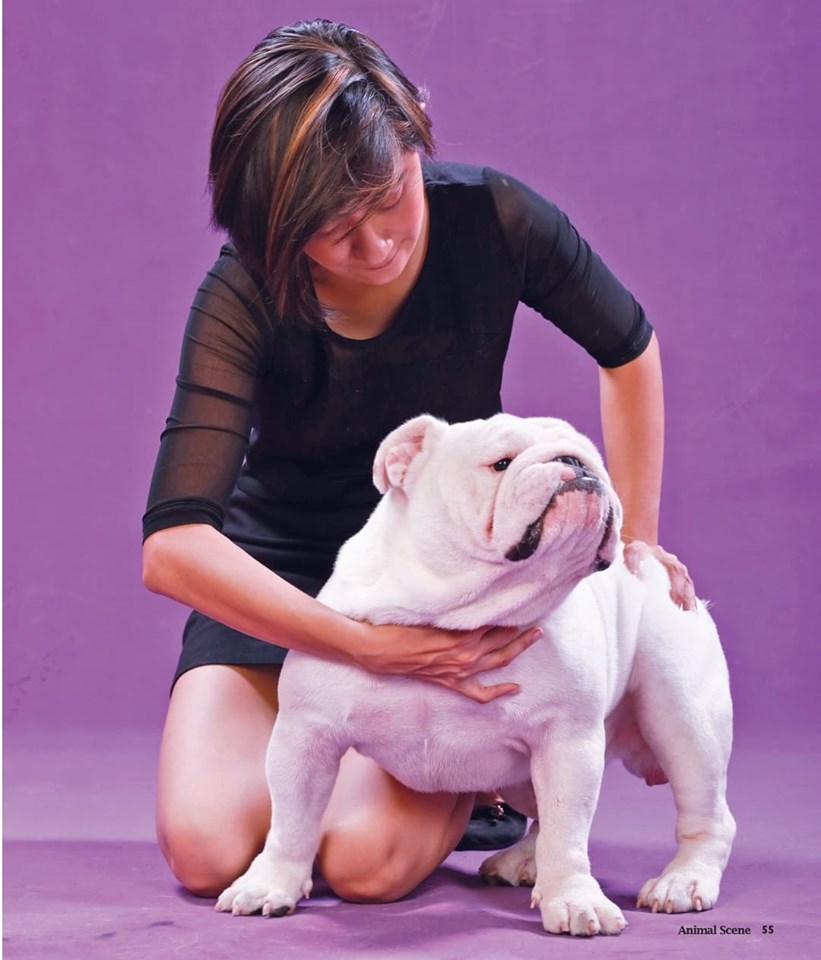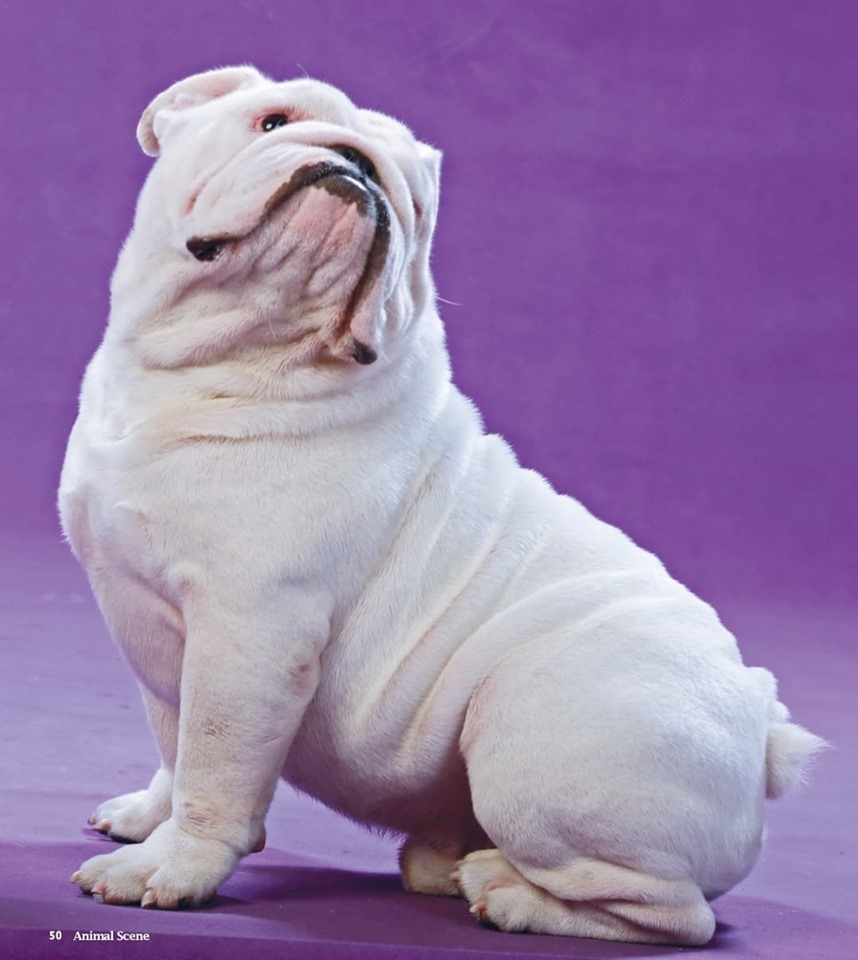At just two years old, Boomer the English Bulldog has already won several competitions, including Best of Breed awards; 4th Best in Group at the Club Terriales Filipinas, Inc. All Breed Dog Show; and Best Junior in a group under Andrzej Kazmierski of Poland. His handler for over a year, Kim So, knows just what it takes to care for a champion dog like Boomer.
A day in the life
Though Boomer has been raised to compete, “Most bulldogs are lazy and would love to sleep,” says Kim. She makes sure that her English Bulldogs get to exercise by going on walks with them in the morning. Then, she lets them do what dogs do best: eat, sleep, and their numbers ones and twos.
She feeds them premium dog food, and sometimes boiled chicken or beef. Twice a week, she serves them boiled liver and vitamins. Her adult English Bulldogs are fed twice a day, while the puppies are fed thrice a day apart from their milk.

According to Kim, anyone can take care of an English Bulldog, and they make great family pets. “They are affectionate, stubborn, and laid back,” she says. Some are friendly while others are “politely reserved.” She explains, “Puppies will have a bit more energy and can get a little rambunctious, but adults are extremely mellow, and love naps, food, and belly rubs more than anything.”
Handling a champion
Kim is a member and dog handler at the Philippine Canine Club, Inc. and a member of the Siberian Husky Breeders and Exhibitors Association. Her brother, Louise Klarke So, says that she came to form a passion for breeding and training dogs despite the instability of the job. Her fondness for dogs and interest in dog shows has even allowed her to speak on local television programs about how she trains her canine friends.
Her family had Bacon, a brown and white English Bulldog, in 2010. They loved Bacon so much that they adopted two more of the same breed a few years afterwards. Boomer is Kim’s friend Mr. Razon’s English Bulldog, but Kim has been tasked with raising him to compete in dog shows.
English Bulldogs

The English Bulldogs, known for their large head, flat face, and massive jaws, are recognized by the American Kennel Club as just bulldogs. They have a short neck, stocky legs, and loose skin that folds into wrinkles.
English Bulldogs usually measure at around 16 inches tall, weighing at about 50 pounds. They have a high tendency to snore and drool, but a low tendency to bark and dog, with an average life expectancy of eight to ten years, according to an article on Hill’s Pet Nutrition’s website.
A champion’s training program
Dogs who participate in competitions are given extra care so that they look their best during show. Even more work goes into preparing an English Bulldog, considering their skin, eyes, and joints are very sensitive. The most common issue Kim has observed among English Bulldogs is allergies, so she has to both maintain their coat shine and prevent them from developing rashes when they’re groomed.
Training begins in puppyhood, as early as three months and continues into adulthood. The first few lessons they are learn are stacking and gaiting, and the training doesn’t stop even when they aren’t preparing for a show. Kim says that Boomer has had so much success because of his “great expression of head, good build, and structure.” However, she admits that there is no secret to honing a champion dog. One just has to study the dog’s breed and apply all that they’ve learned, and any dog can be like Boomer.
Behind the beauty
Because bulldogs are so clingy, “You can feel their unconditional love,” Kim says. But she warns anyone who wants to take care of an English Bulldog to study the breed.

According to the Universities Federation for Animal Welfare, a UK-registered animal welfare science society, Brachycephalic Airway Obstruction Syndrome is common in all dog breeds with brachycephaly. Brachycephaly, which literally means “short skulls,” translates to the flat faced appearance of breeds like the English Bulldog, according to a 2016 article by Pippa Mattinson for The Happy Puppy Site. They are often born with congenital abnormalities that make breathing more difficult, which means heavy exercise is out of the question and they are more prone to heat stroke, according to an online article from Universities Federation for Animal Welfare.
Kim suggests having English Bulldogs checked every six months for their heart and respiratory health. They should also be kept in a cool place indoors, especially in the hotter seasons. When they’re outdoors, she always holds an umbrella over them to keep them in the shade.
With or without their flat-faced appeal, English Bulldogs are the perfect companion dogs, but their emotions can also greatly impact their stress levels. “Most bulldogs tend to be so relaxed, home owners will often forget they are around,” Kim laments. All animal companions deserve affection and positive attention, and the English Bulldog is no different. They will no doubt, in Kim’s words, “reciprocate your love.”
Photos by Jeffrey C. Lim
This appeared in Animal Scene Magazine’s April 2020 issue.
You might want to read:
– Couple goals: French bulldogs pose for the most adorable maternity shoot
– Keeping it healthy with a pocket bully
– Against all odd: Giving home even to the fiercest of breeds






